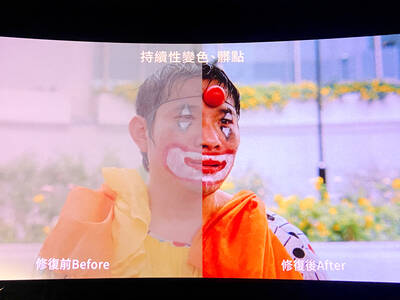Following two recent historical studies of English King Henry V’s improbable military victory on a muddy French farm in 1415, it is not surprising an historical novel would appear to tell the story in a more visual, personable manner.
With Agincourt, prodigious novelist Bernard Cornwell presents a wonderful fictional version of the English army invasion of France and the subsequent showdown battle. Cornwell, already widely known for his medieval historical novels and his Richard Sharpe series, which follows an English soldier through the Napoleonic wars, picked names off the 1415 rosters of soldiers and invented backgrounds, personalities and interrelationships.
Cornwell blends his characters into the fragrant and coarse Middle Ages civilization and rounds out his story with appropriate timeless themes.
English archer Nicholas Hook is Cornwell’s lowborn protagonist in a story balanced with English and French characters.
Hook’s strength and archer training leads him first to Soissons, France, where the French re-conquer the English-occupied town. The atrocities Hook witnesses motivate him as he is recruited into the English army summoned by Henry, who seeks to strengthen his claim to France’s throne.
A generation before Joan of Arc, Hook, too, hears “voices” that guide him through his adventures and the heat of battle. He believes his guardian angels are the martyred saints Crispin and Crispinian.
The climactic Agincourt battle, as noted by William Shakespeare’s play, occurred on the feast day of those saints, Oct. 25, 1415.
Cornwell’s narrative vividly tracks the historical plot as Henry’s army sails to the mouth of the Seine River and begins a prolonged siege on the walled city of Harfleur.
The siege takes longer than expected, and Henry’s army is widely infected and weakened with dysentery before it can march inland for the return trip home via Calais, France.
The French confront Henry’s small, starving 6,000-member force with about 30,000 men. Cornwell’s extended battle narrative articulates the historical explanations of how Henry’s outnumbered army resoundingly defeated the French — the muddy battlefield and the tactical use of the English archers vs the leaderless French forces overweighed by their own armor and weapons.
Cornwell’s narrative is grisly at times, and the author displays a flair for inventing colorful and obscene medieval insults.
Cornwell populates the novel with good and evil characters from both sides. Even Henry is not black and white. A humane and grateful leader, Henry also judges harshly, ordering the execution of a soldier wrongly accused of stealing a religious artifact.
The unfortunate soldier happens to be Hook’s brother, in Cornwell’s story.
The ranks of the Christian priests vary from the purely evil — one English priest loves to rape — to the comforting and empathetic.
The extraordinary Agincourt battle continues to fascinate because it stands more for what happened than why it happened. The English continue to draw national identity from it. The Laurence Olivier movie during World War II, based on Shakespeare’s play, was government-financed for propaganda purposes.
For a three-dimensional view of the event, readers should devote time to consume three works: Cornwell’s novel, Juliet Barker’s 2005 history, also titled Agincourt and, of course, Shakespeare’s history play, King Henry V.

Words of the Year are not just interesting, they are telling. They are language and attitude barometers that measure what a country sees as important. The trending vocabulary around AI last year reveals a stark divergence in what each society notices and responds to the technological shift. For the Anglosphere it’s fatigue. For China it’s ambition. For Taiwan, it’s pragmatic vigilance. In Taiwan’s annual “representative character” vote, “recall” (罷) took the top spot with over 15,000 votes, followed closely by “scam” (詐). While “recall” speaks to the island’s partisan deadlock — a year defined by legislative recall campaigns and a public exhausted

In the 2010s, the Communist Party of China (CCP) began cracking down on Christian churches. Media reports said at the time that various versions of Protestant Christianity were likely the fastest growing religions in the People’s Republic of China (PRC). The crackdown was part of a campaign that in turn was part of a larger movement to bring religion under party control. For the Protestant churches, “the government’s aim has been to force all churches into the state-controlled organization,” according to a 2023 article in Christianity Today. That piece was centered on Wang Yi (王怡), the fiery, charismatic pastor of the

Hsu Pu-liao (許不了) never lived to see the premiere of his most successful film, The Clown and the Swan (小丑與天鵝, 1985). The movie, which starred Hsu, the “Taiwanese Charlie Chaplin,” outgrossed Jackie Chan’s Heart of Dragon (龍的心), earning NT$9.2 million at the local box office. Forty years after its premiere, the film has become the Taiwan Film and Audiovisual Institute’s (TFAI) 100th restoration. “It is the only one of Hsu’s films whose original negative survived,” says director Kevin Chu (朱延平), one of Taiwan’s most commercially successful

The primaries for this year’s nine-in-one local elections in November began early in this election cycle, starting last autumn. The local press has been full of tales of intrigue, betrayal, infighting and drama going back to the summer of 2024. This is not widely covered in the English-language press, and the nine-in-one elections are not well understood. The nine-in-one elections refer to the nine levels of local governments that go to the ballot, from the neighborhood and village borough chief level on up to the city mayor and county commissioner level. The main focus is on the 22 special municipality